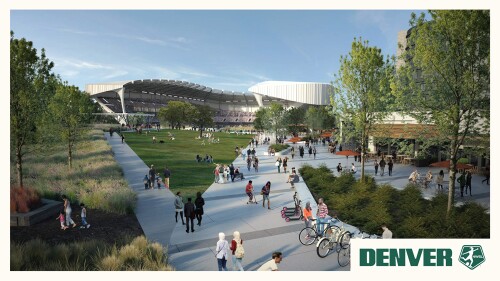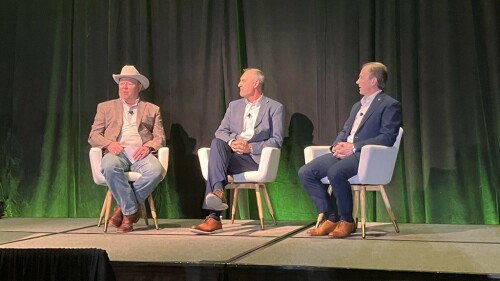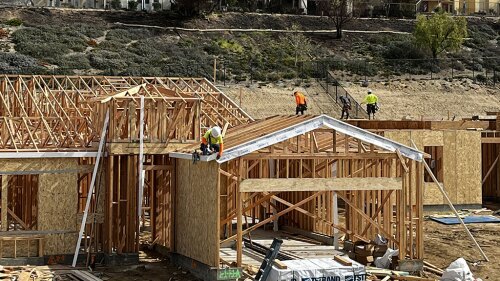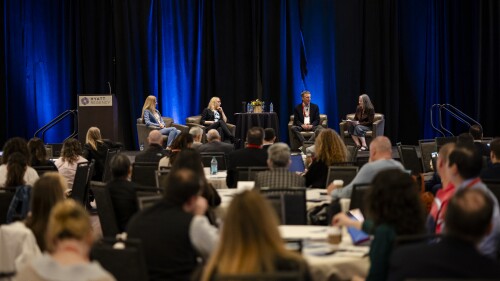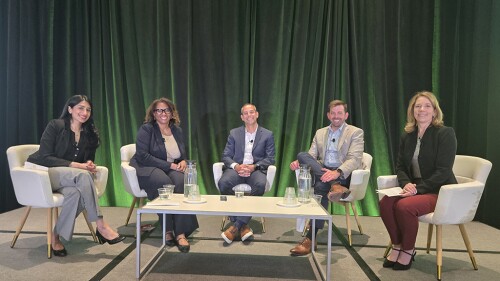Topics
Capital Markets and Finance
How are tariffs likely to affect commercial real estate?
Real estate professionals—from developers to investors—may need to re-evaluate underwriting assumptions and growth expectations.
Deal-making has lately proved to be tough sledding for the commercial real estate industry. Although 2024 brought a welcome rise off the bottom in year-over-year sales, total sales still came in at the second-lowest level since 2013. The latest data from MSCI Real Assets shows $438 trillion in 12-month trailing sales volume through February, a 15 percent increase on a year-over-year basis.
Design & Planning
The setup is printed on the game board: “The empty piece of land was previously occupied by a large shopping mall. After years of decline, the mall was eventually closed and left abandoned. Its closure created a clean slate—free of historical preservation concerns and extensive land remediation—offering a blank canvas for the future development of this community.”
In an exciting development for women’s sports in Denver, Colorado, the city council recently approved a $70 million infrastructure grant to purchase and ready a site for construction of a new stadium dedicated to a new National Women’s Soccer League team. This initiative marks a significant milestone not only for women’s soccer but also for the community at large, as it aims to empower women’s sports and create a vibrant hub for activities revolving around them.
Nestled in the forested hills west of Napa Valley, Enchanted Hills Camp—which is owned by LightHouse for the Blind and Visually Impaired—has provided unparalleled recreational opportunities and skills training for blind and low-vision campers of all ages since 1950. After the devastating Napa wildfires of 2017 destroyed more than 25 structures and in excess of 900 trees on the property, the camp was not only rebuilt but also reimagined.
Development and Construction
At the 2025 ULI Spring Meeting, leaders from Oxland Group, Taylor Morrison, and Highland Homes convened for a panel titled “The New Builder/Developer Dynamic: Partnering for Success in a Shifting Market.” Tom Woliver, co-president and founder of Oxland Group, moderated the discussion with Erik Heuser, chief corporate operations officer for Taylor Morrison, and Jeff Stinson, senior vice president of Highland Homes.
Fourteen developments from across Asia have been named winners of the 2025 ULI Asia Pacific Awards for Excellence, one of the real estate industry’s most prestigious honors. Announced at the 2025 ULI Asia Pacific Summit held in May in Hong Kong, this year’s award winners include projects in Australia, Bangladesh, China, India, Japan, the Philippines, and Singapore.
As drones and electric flying vehicles mature, China imagines a new urban landscape
Resilience and Sustainability
Six months after urban wildfires devastated neighborhoods in Los Angeles, signs of rebuilding are evident. Although the landscape still resembles a charred war zone, many residential lots have been cleared with assistance from FEMA. In Altadena and Pacific Palisades—the communities that, together, lost more than 16,000 structures—some homeowners are overcoming huge hurdles, such as permitting and steep construction costs, and are expected to begin rebuilding this year. And builders are banding together in a new Builders Alliance to share resources and incrementally ease the massive housing shortage that plagued the city even before the fires.
Extreme weather events such as droughts and floods significantly impact vulnerable communities across the country—especially in places where the population continues to grow, creating even more tension between real estate demand and the risk of catastrophic flooding or drought. The good news is that shaping real estate projects around water-wise and flood-resilient measures can greatly mitigate water-related risks—and greatly enhance asset value at the same time.
Without climate adaptation, large corporations could face $1.2 trillion in annual losses by 2050, according to Lindsay Brugger, vice president of the Urban Resilience program at ULI’s Randall Lewis Center for Sustainability in Real Estate. Brugger delivered opening remarks at ULI’s sixth annual Resilience Summit on May 15 in Denver where more than 300 attendees gathered at the Hyatt to explore resilience and recovery locally and elsewhere.
Issues and Trends
At the recent Homeless to Housed Symposium—part of the ULI 2025 Spring Meeting in Denver, Colorado—Jeff Olivet, a prominent expert in advancing solutions to homelessness, delivered a keynote address. In it, he not only contextualized the current state of homelessness in the United States but also provided a foundational framework for the forthcoming 10 Principles for Addressing Homelessness: A Guide for Commercial Real Estate & Finance.
At a panel at the 2025 ULI Spring Meeting in Denver, Colorado, legal experts shared their insights on how developers, planners, and housing advocates can better navigate the myriad barriers and evolving legal framework at federal, state, and local levels to advance affordable housing projects and initiatives.
Three-time Paralympian medalist, Denver resident, bestselling author, and motivational speaker Amy Purdy shared her inspirational story during the closing session of the 2025 ULI Spring Meeting.




![IMG_2896[1].JPG](https://cdn-ul.uli.org/dims4/default/a6f9030/2147483647/strip/true/crop/4032x2266+0+7/resize/500x281!/quality/90/?url=https%3A%2F%2Fk2-prod-uli.s3.us-east-1.amazonaws.com%2Fbrightspot%2F80%2F39%2F205699104776b5d89f410b5cd438%2Fimg-28961.JPG)
